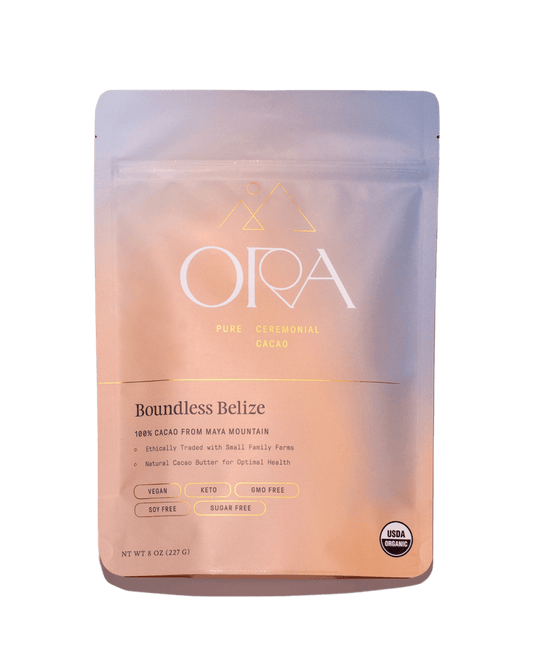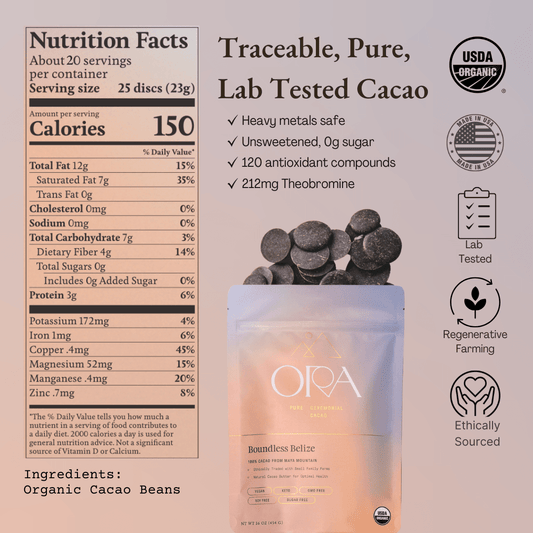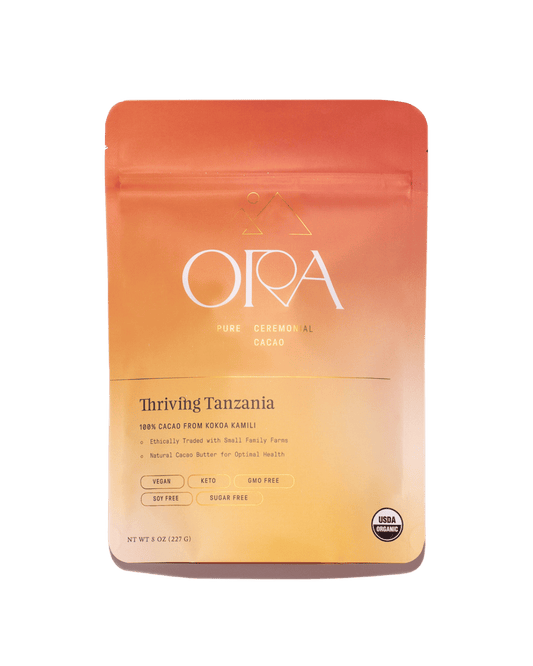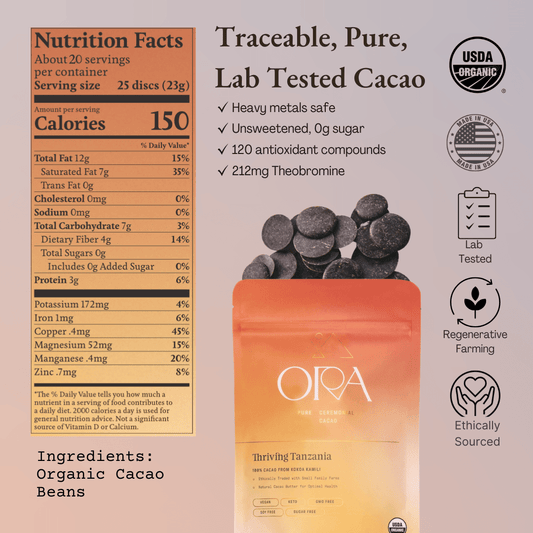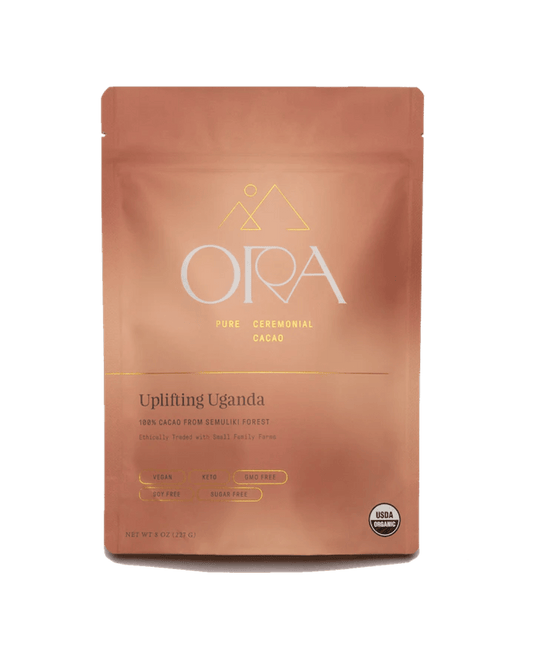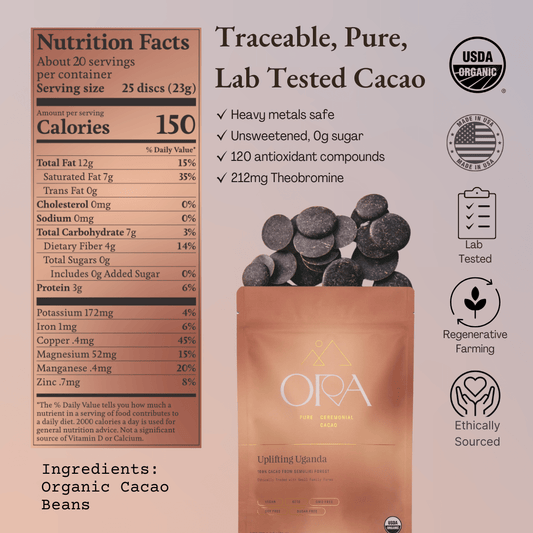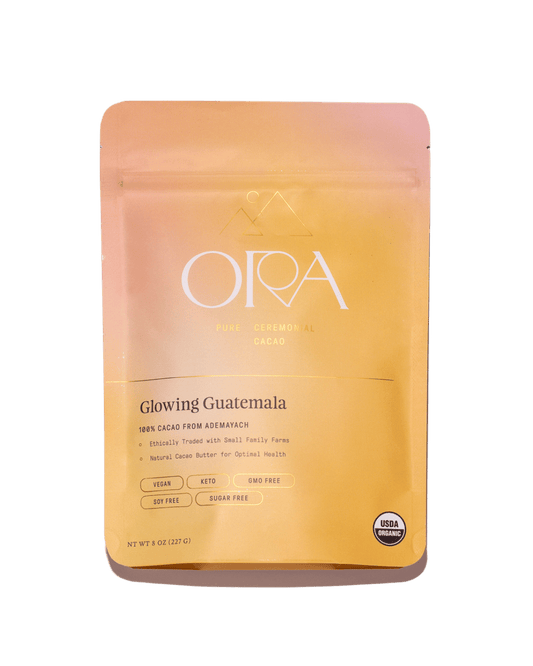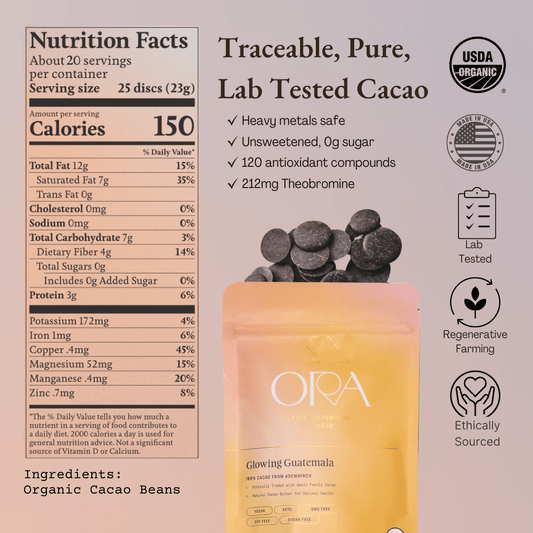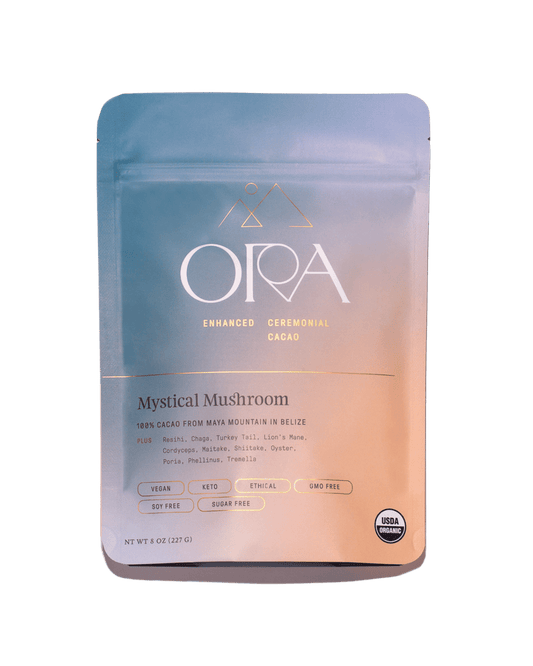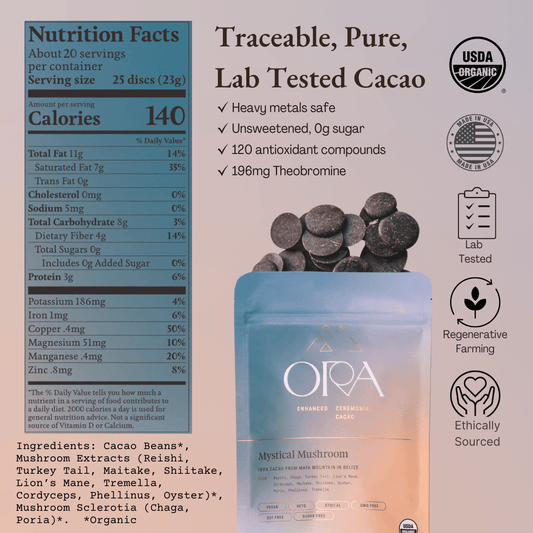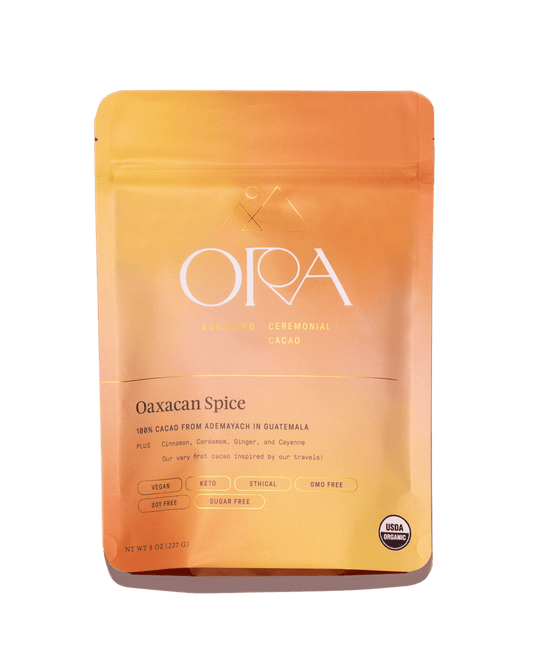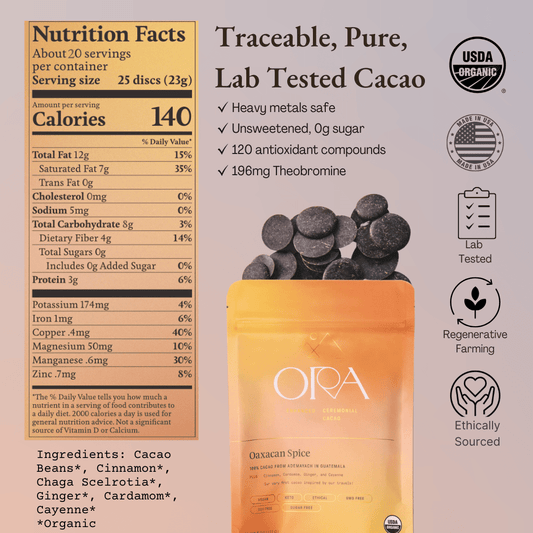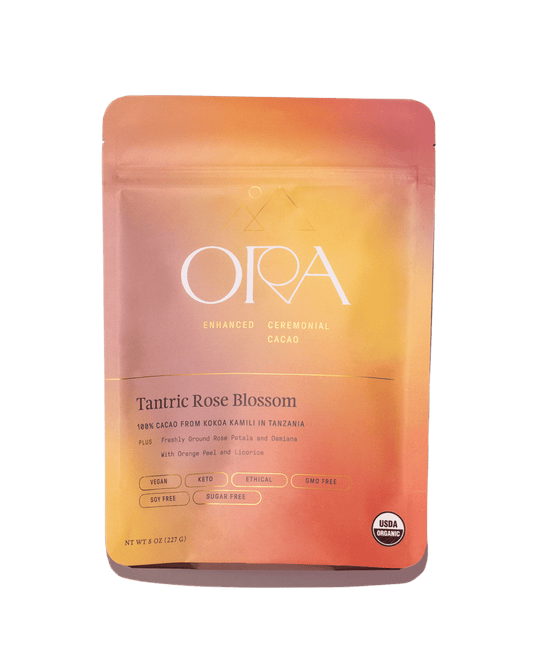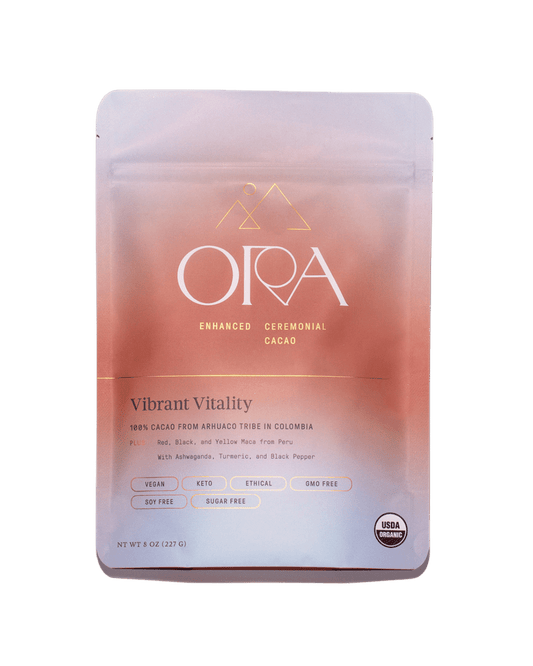From when we first brought chocolate bars to farmers markets as Firefly Chocolate and throughout our early ceremonial cacao days, one of the most common questions people asked us was if our chocolate was “raw.” Our answer was always this:
“If raw to you means integrity in sourcing and a loving and reverent relationship with cacao as a plant medicine, then yes. If raw to you means unroasted or processed below 116º F, the answer is no. But we can tell you why we think “raw cacao” is technically inaccurate.”
This led us to many good conversations with people, and it feels like seven years later, we’re having less of those conversations, and the emphasis on “raw” is shifting away from cacao. But for your benefit, we thought we’d revisit these fundamentals of the how and why we make cacao the way that we do.
Why were people asking for “raw” cacao in the first place?
“Raw” first became a buzzword for a healthy lifestyle when the concept of dieting with just fruits and vegetables was introduced. For those following the raw food diet, raw meant only eating foods that were prepared below 116º F. Naturally, people wanted to continue eating chocolate as part of their raw food lifestyles, so companies began marketing “raw chocolate.” However, unless you are eating the raw cacao fruit, most chocolate and ceremonial cacao can’t actually be technically raw, nor is the standard actually relevant to cacao.

Why the flavor of chocolate requires for it not to be “raw”
It is EXTREMELY rare to find truly raw cacao, and this has to do with the process it needs to go through for the end product.
To begin, most modern cacao is fermented after it is harvested, and the fermentation temperatures need to reach 124ºF for proper flavor development, which is beyond the raw threshold of 116ºF. This simple understanding of the fermentation process makes it clear that “raw cacao” is misleading marketing from a technical perspective.
The raw temperature threshold of 116ºF was developed specifically to protect certain enzymes and compounds that are present in uncooked fruits and vegetables. Both fruits and vegetables have high water content. Dried cacao beans, on the other hand, have a water content of less than 8%. As a result, cacao actually does quite well with heat, and instead of losing potency when heated, it undergoes an alchemical activation when they are roasted. Roasting brings out the flavor of the cacao beans and dries out the remaining moisture. We highly recommend eating a raw cacao bean side by side with a roasted cacao bean - the difference is enormous.
What’s critical here is the careful application of heat. Much industrial cacao is processed with high heat to achieve uniformity and mask bad flavors from low-quality inputs. But this effectively kills the cacao.
Indigenous Wisdom: it’s all about balance

Indigenous peoples of the Americas have been working with cacao for hundreds of years. In no instance have we found “raw cacao” practices. In fact, we’ve encountered a celebration of the process of bringing the magic of the fire element into chocolate making.
Indigenous cacao traditions all over central and south America toast their cacao at low temperatures using a clay comal and the coals from an open fire. It takes enormous skill to roast cacao beans using traditional methods, which is why the elders of the community were tasked with carefully stirring and rotating the cacao as it was being roasted to prevent any of the beans from scorching.
We believe there is wisdom in these indigenous preparations of cacao, so we too lightly toast our cacao. Just as Indigenous communities take extra care to make sure the beans don’t overheat, we, too, use a low-temperature roast just sufficient enough to activate the cacao beans and introduce delightful flavor! As we’re sure you’ll experience from our finished product and the many reviews on our website, our low-temperature roast does not negatively affect the energetic integrity of the cacao.
We strongly believe that making high-quality ceremonial cacao involves taking the cacao through a four-element transformation as we work with it, including fire, air, earth, and water. So, of course, we can't leave out the fire! In essence, this also pays respect to the ways in which cacao is traditionally prepared. The key is balance.
Lovingly Made Cacao!

Mystical Mushroom Enhanced Ceremonial Cacao

Tantric Rose Blossom Enhanced Ceremonial Cacao

Glowing Guatemala Pure 100% Cacao
Join Us! Ora Cacao Community
- FREE Weekly Virtual Cacao Ceremonies

From our cacao community member @amayalma
Cacao brings us together and creates authentic group connections. Come experience cacao with people from around the world in a safe welcoming space. Click here to sign up and see more details!
Let's Be Friends!

Text +1 (855) 663-0666 for a more intimate cacao conversation.
You'll get access to the Ora Cacao Family, our private circle where we share exclusive promotions, cacao ritual insights, exciting product updates, and more.



